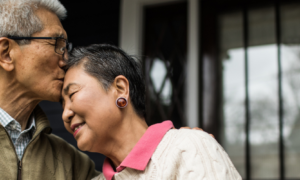Last week, I kicked off our National Fair Housing Month blog series where we’re aiming to bring awareness to the housing inequalities that minority communities face in the search for their dream home. Lydia Pope, president of the National Association of Real Estate Brokers (NAREB) sat down with me to discuss the current state of fair housing and how NAREB is prioritizing several initiatives including shrinking racial inequalities and financial hurdles in 2023.
To continue this series, I had an opportunity to connect with Kurt Nishimura, president of the Asian Real Estate Association of America (AREAA) who shared how fair housing has evolved, what needs to be done and how AREAA is making a difference.
Gehringer: How has fair housing progressed over the past few years?
Nishimura: One of the major gains in the fight for fair housing is language access. AREAA has fought for a long time to get real estate documents in people’s native language so that they can really understand the obligations of a mortgage and the home buying process. This access has certainly helped raise the overall percentage of homeownership within the AAPI community.
Another focus subject for AREAA has been fighting for alternative credit sources. Culturally, the AAPI community has been brought up to not take on debt and this is the number one reason why the AAPI community has a hard time with homeownership. They struggle with establishing credit and don’t recognize the importance that credit plays when applying for a home in the United States. Fortunately, AREAA has created alternative credit sources for these individuals to show that they have established a credit history, something we’re extremely proud of.
As a result of a language barrier, many people in the community start their own business making it harder to underwrite them since they are not a W2 employee. Even though someone might not have a credit card, the fact that they’ve been on time on rent payments for eight years, things are now considered as part of the credit score, demonstrates the ability to possibly own a home and take on a mortgage.
Gehringer: In relation to fair housing, what are you hearing from your community including clients and agents?
Nishimura: Arizona experienced a sharp rise in pricing during the pandemic since the state was pretty much open for a large part of the pandemic. Arizona has a large Taiwanese semiconductor plant located in North Phoenix and as a result of this plant, some of their staff try to get housing nearby. In one particular incident, I was representing an individual who had the highest offer by over $5,000 and was not contingent on the sale of another house. We had also waived the appraisal and the financing contingency and we still lost to someone that was contingent on the sale of another home, had $5,000 less and didn’t waive any contingencies. I can’t prove that racism was involved, but looking at the dynamics of what was being offered, it would seem like race might have played a part in that. Fortunately, my client found a new construction home at the top of their list, but I had a hard time explaining to my client how we missed out on that original home and it’s disappointing to see race play a factor in these situations.
Gehringer: How is AREAA tackling fair housing issues in 2023?
Nishimura: AREAA has fought for language access in real estate documents, alternative credit sources and resources to make up insufficient work history. Since we’ve made gains in those areas, we’ve identified three policy points to focus on the year: Fair housing – creating equal opportunities to homeownership for all; Appraisal equity – making sure that diverse communities aren’t experiencing a disparity in appraisal values; Data disaggregation – despite having over 50 different ethnicities, the AAPI community is often seen as one monolithic group. In order to find out what’s happening within the community and successfully guide individuals, we needed to disaggregate the data between the different ethnicities including Japanese, Chinese, Korean, Filipino, Eastern Indian, Hmong and more.
Gehringer: What else still needs to be done to create equal housing opportunities for all?
Nishimura: When it comes to fair housing, a lack of supply and affordability concerns are affecting most markets. With a shortage in homes, it’s like a game of musical chairs – there’s a lot of people looking for homes, but not enough in the market. Unfortunately, this can lead to favoritism. It’s really important that on a national basis, we think about how we can create more housing and more affordable housing.
Individuals in markets like Hawaii, where there’s heavy investor activity, unfortunately do not have the ability to purchase the home in many cases because they’re simply outbid by the investors in the market. We need to do something to really fix that problem because its through homeownership and ability to build equity through that home that really kind of shrinks the wealth gap in America. When that wealth gap gets too big, that’s when you see a lot of problems happen in society.
Gehringer: Do you have any concerns related to Fair Housing right now?
Nishimura: AREAA’s mission is sustainable homeownership for the AAPI communities, however, we want everyone to have equal access to homeownership and aim to bring down barriers preventing that access. In our own community, we’ve experienced Asian hate as a result of pandemic rhetoric. In fact, last year, AREAA did a survey of its members asking about their client experiences and the biggest revelation was how safety became the number one factor when considering relocating to a new area. Traditionally, top factors included good prospects for education, growth and opportunity, however, the increase in Asian hate and fear that comes with it contributed to safety being the top factor in that decision making.
Additionally, Texas currently has a bill – Texas Senate Bill 147 – to exclude property rights to people of Chinese, North Korean, Russian and Iranian descent. The way that the bill is written excludes potential or current green card holders and individuals on a work or student visa from being able to buy property. While the intent of the bill is designed for national security, the language that came out of the bill has painted immigrants in a poor light.
Gehringer: Do you have any personal stories related to fair housing?
Nishimura: Last year, AREAA did a survey of its members asking about their client experiences and the biggest revelation was how safety became the number one factor when considering relocating to a new area. Traditionally, top factors included good prospects for education, growth and opportunity, however, the increase in Asian hate and fear that comes with it contributed to safety being the top factor in that decision making.
Additionally, as I reflect on the Texas Senate Bill 147, it’s hard to believe that we might be going backward in time. My grandparents were put in a Japanese Internment Camp in Gila Bend, Arizona and every day that I make my drive from Phoenix into the AREAA office, it’s a constant reminder of how the rights of American citizens can be taken away in times of distress or xenophobia.
Moving Forward
It’s empowering to sit in with a few of our Coldwell Banker-affiliated leaders and hear their concerns in the industry but also uplift their voices and recognized the strides that have been made thus far. As we continue in the month of April, Coldwell Banker will be sharing two more blog posts as part of a full series throughout National Fair Housing Month. Visit the Blue Matter blog next week to read how other organizations in the industry are creating paths to homeownership for all and how you can help your local communities.






